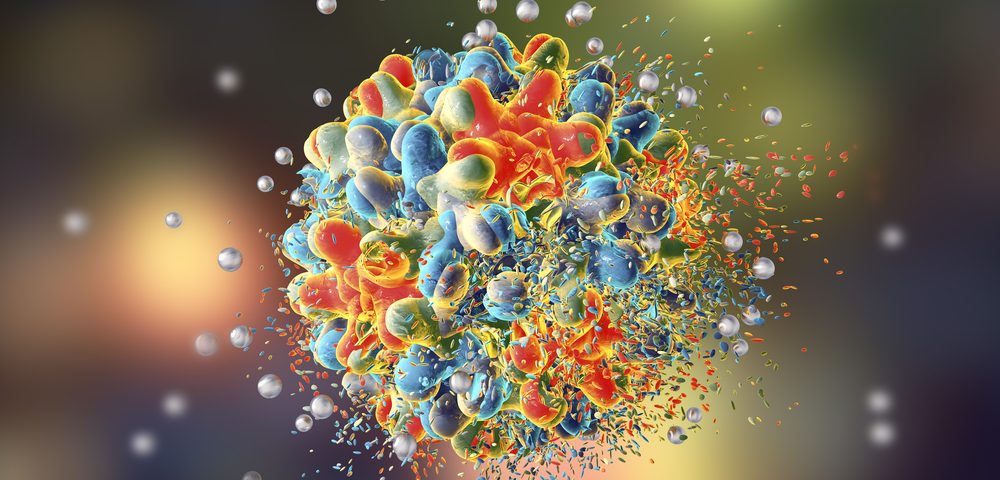Implantable devices made of a thin metallic mesh loaded with cancer-fighting immune cells are able to shrink inoperable ovarian tumors in mice, offering a potential way to boost the efficacy of cell therapies for ovarian cancer and other solid tumors, a study has found.
The work is described in the report, “Nitinol thin films functionalized with CAR-T cells for the treatment of solid tumours,” published in the journal Nature Biomedical Engineering.
Solid tumors, including breast and ovarian cancers, employ multiple mechanisms to hide from and defend against the immune system.
For that reason, cell therapies that proved effective against blood cancers have failed against solid tumors. Injected cancer-fighting immune cells are either unable to reach the tumor or to survive the hostile environment that surrounds it.
Researchers at Fred Hutchinson Cancer Research Center may have taken an important step in circumventing this problem.
Matthias Stephan, MD, PhD, and his team created a prototype of a medical device to be used in cell therapies for cancer.
They crafted a very thin mesh — about seven times thinner than the width of a hair — made of nickel titanium, or nitinol, a metal that can be safely implanted in the body and has been used recently for building medical devices.
Monarch Biosciences provided the metal films used for the research and also helped fund the project.
The tiny mesh is configured with a particular micropattern optimized to accommodate a type of cancer-fighting immune cells called chimeric antigen receptor (CAR) T-cells, along with substances that support the expansion of these cells inside the body.
“The pattern needed to be small enough where the cells would not fall between the cracks and not too small so that the T cells would feel too cramped and wouldn’t be able to move,” Stephen said in a news release.
CAR T-cell therapy is a promising form of immunotherapy that involves collecting a patient’s T-cells — immune cells with anti-cancer activity — and genetically engineer them in the lab so that they can recognize and eliminate cancer cells. These tumor-targeted cells are then expanded in bioreactors to produce hundreds of millions of cells, which are then returned to the patient’s body, where they are expected to multiply and fight the tumor.
Stephan and his team first tested their nitinol scaffold as an implant to deliver CAR T-cells to inoperable tumors in mice with ovarian cancer.
For that, they coated the nitinol film with CAR T-cells programmed to target a marker of ovarian cancer cells, called ROR1.
“It’s like a piece of bread spread with marmalade on both sides,” Stephan said. “The metal film is the bread, and then we put CAR T-cells on both sides of it and then they soak into the middle too.”
When researchers implanted the films close to ovarian tumors in mice, they saw that T-cells oozed out of the metal mesh, expanded, and headed toward the tumor. This made tumors shrink significantly. Within 10 days, the tumors had disappeared in all mice, and after 20 days, 70% of the mice were still tumor-free.
“Cell therapies to fight cancer have had great success in blood cancers but haven’t worked well with solid tumors,” Stephan said. “Our findings take a significant step toward making cell therapies effective against solid tumors by showing that a thin metal mesh loaded with T cells engineered to fight ovarian cancer cleared tumors in 70% of the treated mice.”
The team’s nitinol film also showed potential as a different medical device for cancer treatment — as stents, or tube-like devices, used to prevent tumors from obstructing the airways or the digestive system, as might be needed in people with lung or pancreatic cancer.
“We focused on CAR T-cells in the current experiment, but I could see this approach working with T cell receptor therapies, natural killer cells and other types of immune cells that target cancer,” Stephan added.
This cell-delivery system can be adapted “into a variety of implant configurations, providing direct access to a wide range of anatomies for immunotherapy,” the researchers concluded.

